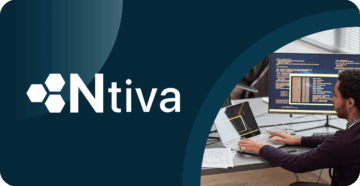How to earn AVD Advanced Specialization & what it means

Here at Nerdio, we are all about empowering not just businesses to succeed with Microsoft Azure, but hardworking IT professionals, too. After all, many of our staff have been in the shoes of an IT admin, consultant, or MSP—yours truly included.
Which is why we’re launching a new, four-part blog series full of helpful tips, tricks and insights to support Azure enthusiasts in the journey toward Microsoft AVD Advanced Specialization, for companies, and also the AZ-140 Certification, for individuals.
To kick off the series–check out our first part exploring what companies have invested (or are investing) in virtual desktop practices in Azure when looking into Azure Virtual Desktop (AVD) Advanced Specialization, along with advice for passing the exam from our team of experts.
Next in the series, I’ll take a step back and explore why the specialization is beneficial for companies, weaving in industry perspective and comparison and also my own firsthand experience from achieving the specialization.
What is Microsoft’s AVD Advanced Specialization?
In 2020, Microsoft released the Microsoft Azure Desktop Advanced Specialization: an award given to companies for meeting a strict set of minimum criteria discussed further below.
As Azure is a powerful solution comprised of more than 200 products and cloud services, Microsoft Azure Advanced Specializations can be obtained across several different technologies and areas of expertise.
So why would you want to achieve the AVD Advanced Specialization? When dealing with existing or new customers, this achievement demonstrates that your company, its consultants, and architects have a deep knowledge of Azure Virtual Desktop and that you meet the highest standards for service delivery and support.
How do we achieve AVD Advanced Specialization?
To ensure your company meets the minimum criteria, Microsoft will schedule a meeting with a third party auditor by ISSI who will spend approximately 4-6 hours in a workshop style format thoroughly reviewing all of your processes, operational documentation and also any design documentation which has been produced for your customers within the past 12 months. Microsoft does this to test your end-to-end capability to gather requirements, design, deliver and support a full AVD solution.
Microsoft recommends you have three different customers to show when providing items required for the Advanced Specialization checklist. In our experience, it is better to focus in on a single customer reference that you know and can talk about with a lot of detail.
What criteria must we meet?
- Competency – To apply for the specialization you must have an active Gold Cloud Platform Competency. Please see the linked full list of requirements but in summation, you need around $100,000 in Azure consumption for the previous 12 months.
- Performance – You must have a monthly average of at least $2500 of Azure Virtual Desktop ACR in the previous three months from at least three different customers. The monthly average ACR can be aggregated across all customers.
- Knowledge – You must have at least three individuals who have passed the following certifications:
- Azure Security Engineer – Exam AZ-500: Microsoft Azure Security Technologies – Learn | Microsoft Docs
- Azure Solutions Architect Exam AZ-303: Microsoft Azure Architect Technologies – Learn | Microsoft Docs
- Azure Administrator Microsoft Certified: Azure Administrator Associate – Learn | Microsoft Docs
Each certification must be held by at least one individual. You will also need to have three people pass the AVD Technical Assessment. We recommend these are the same three people who take the above certifications, and also that these individuals take the AZ-140 exam, which we will detail more later in our series.
What will my company be asked about?
When you register for the Specialization, Microsoft will send you a full checklist of the type of information you will be required to provide. A few examples include:
- Marketing materials with your strategy for selling AVD solutions
- Pre-sales activities
- Evidence of requirements-gathering exercises
- High-level design documentation of the AVD solution
- Low-level design documentation of the AVD solution
- Operational support documentation (i.e. image updates process, patching process, how to add hosts into a host pool etc)
The whole process should loosely follow the AVD Cloud Adoption Framework. If you can provide evidence that your company has a blueprint that follows all design principles of the AVD CAF, and those processes and procedures are followed throughout each of your customers implementations, then you will have a very high chance of achieving the AVD Advanced Specialization.
Advice from our experts on passing the exam
Our staff have guided partners through this process and recommend some general tips and advice below:
- Go through the checklist provided by Microsoft literally line by line. The auditor will cover each section line by line and asked you to provide evidence to show how you have met each requirement.
- Make sure that your designs match your blueprints and processes.
- Know your designs well, and ensure you can talk about them in detail to somebody who has never seen the environment before.
- Ensure that you also have the Azure Landing Zone designs handy and are able to reference them.
- Our final and most important bit of advice is when going through the process is to ensure that you can match every single checklist item to section in your documentation (Requirements, LLD, HLD’s etc)
If you want to know more about the AVD Advanced Specialization, stay tuned for the next blog in our series or reach out to us for a FREE 30-minute AVD Advanced Specialization consultation to get your Azure Virtual Desktop Advanced Specialization questions answered by one of our technical professionals.


